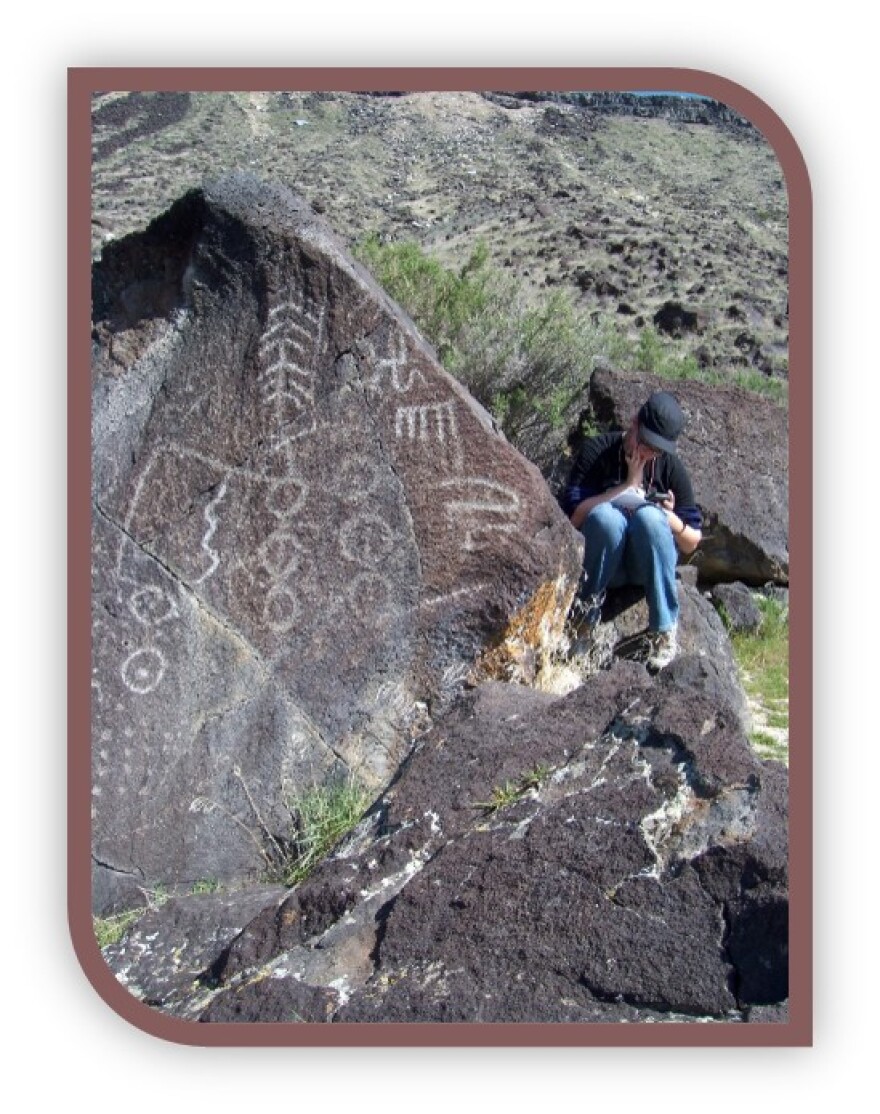Students at the College of Western Idaho are entering the next phase of their project of documenting rock art in the Snake River Basin outside of Melba. The Anthropology Club is going from the field to cyberspace to bring petroglyphs to researchers around the world.
Nikki Gorrell teaches at CWI and is the advisor for the Anthropology Club. For two years, she and her students were in the field - mapping, photographing and sketching petroglyphs pecked into the rocks hundreds or thousands of years ago.
Now the field work is done and the group is building an online database of the information. Gorrell says it will be great tool for a school teacher in New York or Paris, teaching their kids about prehistoric people in the Snake River Basin.
"We could pull this up, the kids could see it, they could have an interactive element, so everybody around the world could learn more about preserving this really important cultural resource,” says Gorrell.
They’re also building a smartphone app that hikers can use in the field to bring up information on specific petroglyphs. Hikers can stand in Celebration Park and click on a map with dots. Clicking a dot on the “Collector App” will bring up data, from GPS coordinates to photographs and descriptions of the art.
“And what’s valuable about this is not only does it help spur an interest in preserving this really wonderful prehistoric art, but it also allows people to access this information in the field, on site.”
Gorrell says vandalism, erosion and time are all working to destroy the petroglyphs.
“Over time, these things simply sort of fade away, so it’s important to do as much as we can to record and preserve these, but encourage other folks to appreciate them.”
She says all rock art is in danger because of the elements. One way to help protect the area is to turn it into one of Idaho’s newest parks.
“It would be great to put a big plastic bubble over everything and keep it away from the elements and erosion and vandalism, but since we can’t do that, the best we can do is record it, preserve it and turning it into a park is really going to help with that.”
Gorrell says vandalism is a big problem with petroglyphs.
“Right now out there, it’s kind of the Wild West. Anything can happen and anything does. But when it becomes a park, there will be an onsite manager and we’ll have a scenario to have the petroglyphs more protected and preserved,” says Gorrell.
The park will include a new trail that will be built from Map Rock Access to Map Rock. The Anthropology Club will help build interpretive materials and signage on the site of the new park.
“How can we preserve it as long as possible for future generations? Recording it is one thing, but getting the educational component out there is another.”
One of the CWI students, Allie Goeckner, made a documentary of the project which you can see here.
Find Samantha Wright on Twitter @samwrightradio
Copyright 2015 Boise State Public Radio



